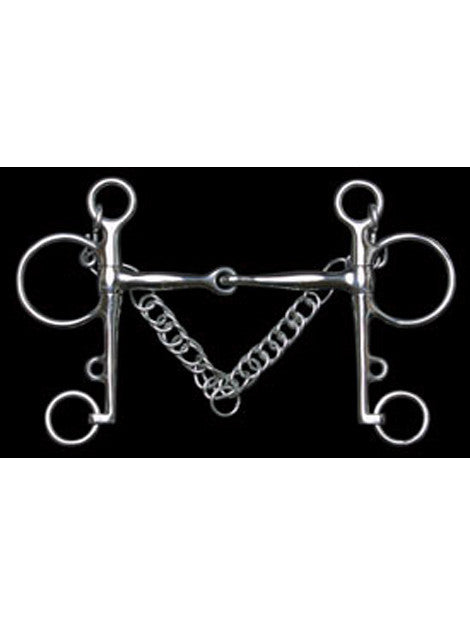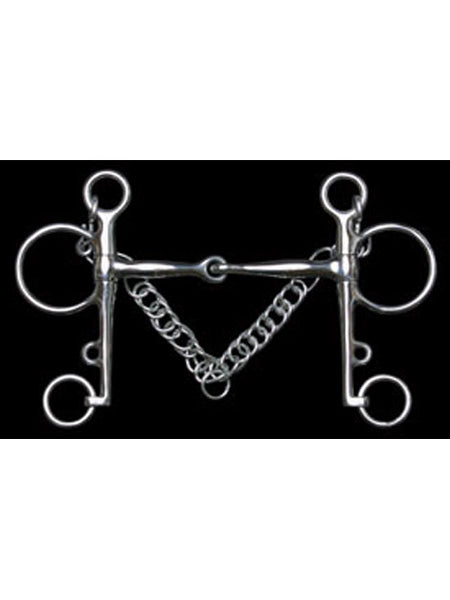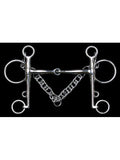You have no items in your shopping cart.

- Home
- WOMEN
- KIDS
- MEN
- HORSE
- ACCESSORIES & GIFTS
- BRANDS
- NEW
- GIFT VOUCHERS
- ABOUT US
- CONTACT US







Pelhams have both a snaffle and a curb action - similar to double bridles but without the complexity of two bits and two sets of reins. When used with roundings, which is the most common way to use a pelham, the bit offers a snaffle feel in the mouth but with added poll pressure which encourages the horse to lower it's head, and a curb, which applies pressure in the mouth and behind the chin - squeezing the jaw to control the horse.
Different horses react differently to this pressure so when first trying a pelham, it would be advisable to do so after a discussion with an instructor, and we would recommend a reasonably loose curb.



